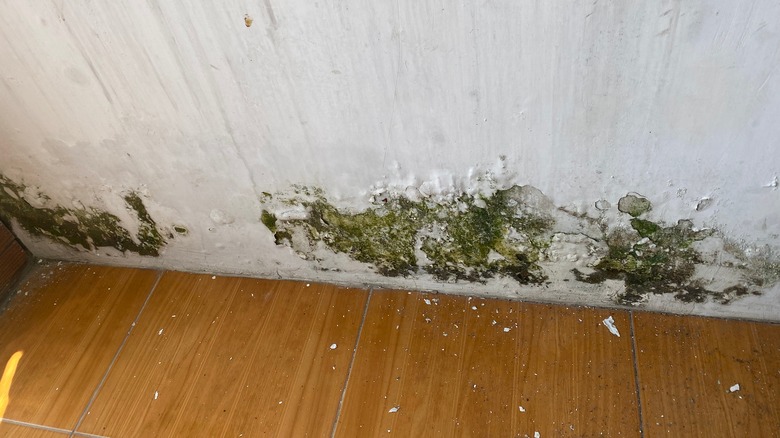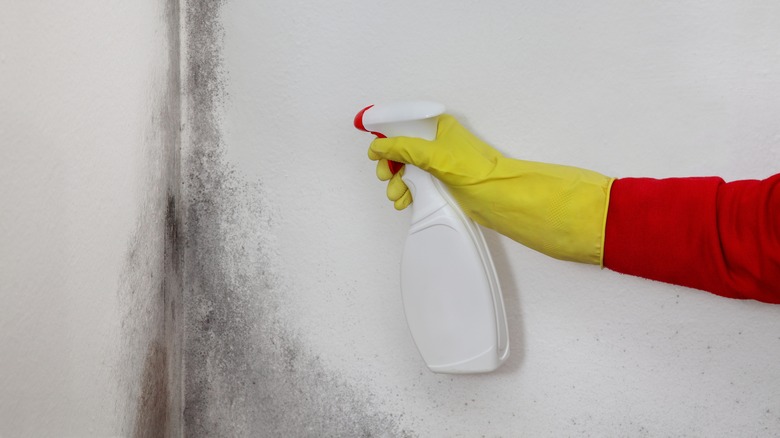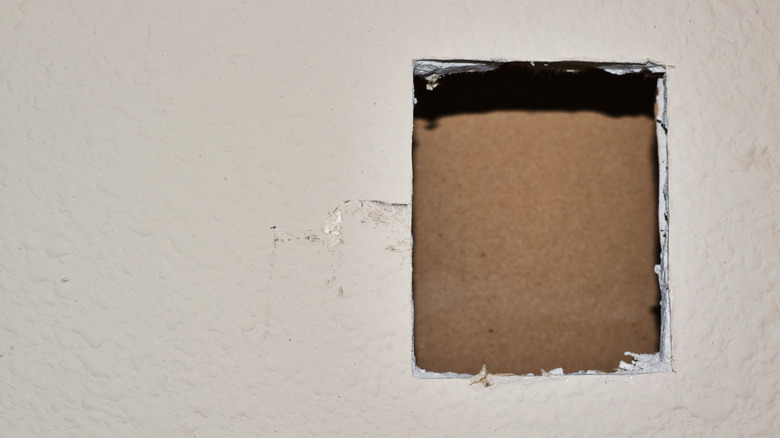Mold Growing Inside Of Walls: Is There A Solution Or Do You Need To Replace Them?
Few things can cause a tenant or homeowner to panic as quickly as the sight of mold on the wall — especially because, when it comes to moldy walls, what you see isn't always what you get. Mold can quickly spread throughout drywall and become an extensive issue, which is why it's often better to replace the drywall altogether. But before you make any decisions, consult a professional for an expert opinion.
Drywall is an ideal spot for mold. It absorbs moisture and holds onto it for a long time, which mold needs to thrive. The drywall itself also serves as a plentiful food source. If you have mold inside your walls, you might notice black, green, or gray spots, as well as a musty smell, cracked or peeling paint, or signs of mold exposure such as headaches or a runny nose.
By the time you can visibly see mold, there's a good chance that there is mold on the other side of the drywall as well, especially if it's unpainted. Eventually, the mold can spread to the wood in the wall as well. And according to the U.S. Environmental Protection Agency, a "hidden mold" issue like this could be a telltale sign that it's time to hire a professional for your mold problem. But is there a DIY solution?
Tips to DIY moldy walls if you must
Maybe you're not able to hire a professional to get rid of your mold problem, or you've had an expert confirm that the problem is minimal enough to fix yourself. To kill mold inside the wall, you can try using a commercial mold remover or a bleach solution with one part bleach to three parts water. Spray the area, then scrub it with a brush. Even better, DIY a drywall replacement in addition to treating the area with mold remover — cut off extra drywall around the moldy area to be safe.
Make sure to let the wall dry out completely before replacing the drywall, since moisture is a key component for mold growth. Lowering humidity in the home and improving airflow is also vital for preventing a reoccurrence. Even if mold spores still exist in your home, they can't grow without moisture.
It's also vital to take safety precautions whenever you're attempting to treat mold yourself. Wear an N95 mask, goggles, and gloves. Remove furniture and cover surrounding areas with plastic sheeting to protect them from mold spores. When you're done, vacuum the area with a HEPA vacuum.
Why a pro makes all the difference with moldy walls
While there are DIY ways to remove mold in your home, those methods work best for smaller (under 10 square feet) areas of surface mold. Things get trickier once the mold has reached the inside of the wall. It's difficult to figure out how far the mold has spread without an expert's assistance, so more mold may be lurking in your home than you realize. And the more you disturb the area to investigate, the more mold spores will spread throughout the space, risking your health and leading to further growth. The same risks exist for DIY removal.
A professional can tell you how severe your mold problem is and help you with remediation. Don't be surprised if they decide to dispose of the moldy drywall and replace it. This is often the most practical way to ensure a permanent end to a mold problem. Finding and cleaning all the mold within the drywall can be difficult and time-consuming, and there's a high chance that you put in all that effort only for the problem to return after a while.


